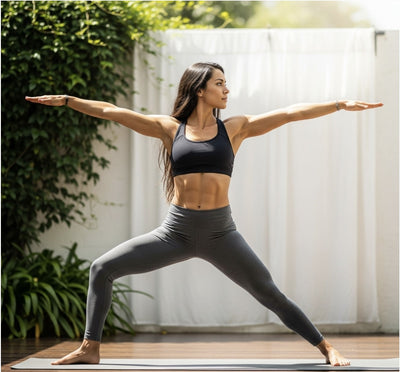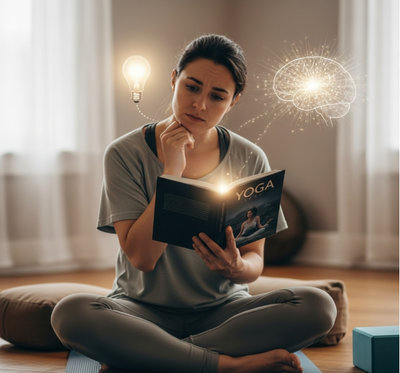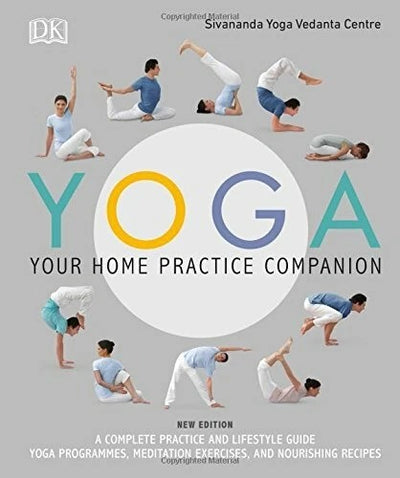
Iyengar vs. Ashtanga: Methodological Distinctions - 5To9STyle
Share
Iyengar vs. Ashtanga: Methodological Distinctions
Decoding the Disciplines: Methodological Distinctions Between Iyengar and Ashtanga Yoga
Iyengar Yoga and Ashtanga Yoga are two highly influential and widely practiced yoga styles, both originating from the teachings of T. Krishnamacharya. While they share a common lineage and emphasize a disciplined approach to yoga postures (asanas) and breath, their methodological distinctions are significant. Understanding these differences is crucial for any practitioner seeking to choose the style that best aligns with their body, mind, and personal goals.
Both systems offer profound physical and mental benefits, but they achieve them through fundamentally different approaches to sequencing, pace, prop usage, and focus.
1. Sequencing and Pace: Fixed Flow vs. Sustained Holds
The most apparent difference lies in how poses are structured and paced in a class:
- Ashtanga Yoga: Known for its rigorous, fixed sequences (e.g., the Primary Series, Secondary Series). Students typically move through these sequences dynamically, linking each posture with breath (Vinyasa). The pace is generally faster and continuous, creating a challenging, flowing yoga workout. The sequence rarely changes, fostering discipline and memory.
- Iyengar Yoga: Does not follow a fixed sequence. Instead, classes focus on a selection of yoga poses that are often held for longer durations. The emphasis is on deep exploration of each individual pose, allowing practitioners to meticulously refine their alignment and understand its subtle effects. There are often pauses between poses, and the pace is generally slower and more deliberate.

2. Prop Usage: Essential Tools vs. Minimalist Practice
The use of yoga props is a defining characteristic that strongly differentiates the two styles:
- Ashtanga Yoga: Traditionally, Ashtanga is practiced with minimal or no props. The idea is to develop the body's inherent strength and flexibility. A yoga mat is essential for grip, but yoga blocks or yoga straps are rarely used unless for specific therapeutic needs, and not as an integral part of the regular practice.
-
Iyengar Yoga: Revolutionized the modern yoga world with its innovative and extensive use of props. Yoga blocks, straps, blankets, bolsters, chairs, and wall ropes are integral tools. They are used to:
- Make poses accessible to students of all levels, body types, or those with limitations/injuries.
- Aid in achieving precise alignment.
- Deepen the understanding and experience of a pose by providing support or leverage.
- Facilitate therapeutic applications.
3. Core Focus: Vinyasa Flow vs. Precision Alignment

While both styles emphasize breath and alignment, their primary focus areas differ:
- Ashtanga Yoga: The central focus is on Vinyasa – the synchronized movement with breath. This creates a continuous, flowing practice that cultivates internal heat (tapas), purifies the body, and leads to a meditative state through relentless movement. Drishti (gaze points) are used to aid concentration.
- Iyengar Yoga: The paramount focus is on precision and alignment. Every part of the body is meticulously observed and adjusted to achieve the correct anatomical and energetic form of each posture. This intense focus on detail builds profound body awareness and allows the mind to become completely absorbed, transforming the pose into a meditation.
Choosing Your Path: Which Style Suits You?
- Choose Ashtanga if: You thrive on structure and consistency, enjoy a vigorous physical challenge, want to build stamina and strength through continuous movement, and are drawn to a disciplined, meditative flow.
- Choose Iyengar if: You value meticulous detail and precise alignment, are working with injuries or limitations (with a qualified teacher), prefer longer holds to explore poses deeply, and seek a therapeutic and highly anatomical approach to yoga.
Many practitioners find that elements of both styles can be beneficial. For example, the precise alignment from Iyengar can inform and refine an Ashtanga practice, and the fluidity of Ashtanga can bring a new dynamic to a more static practice. Whatever your choice, ensure you have comfortable and supportive yoga apparel to enhance your experience.
Discover Your Ideal Yoga Journey
Ready to understand the core methodological distinctions between Iyengar vs. Ashtanga Yoga and choose the ideal yoga style for your practice and goals? Embrace the journey of self-discovery on your mat. For high-quality yoga mats, versatile yoga props, and comfortable yoga wear designed for every practice, explore our full collection at https://5to9style.com/collections/all.
Begin your yoga journey today and find the path that resonates most with you. Visit our homepage for more insights and to find products that align with your mindful lifestyle: https://5to9style.com.








